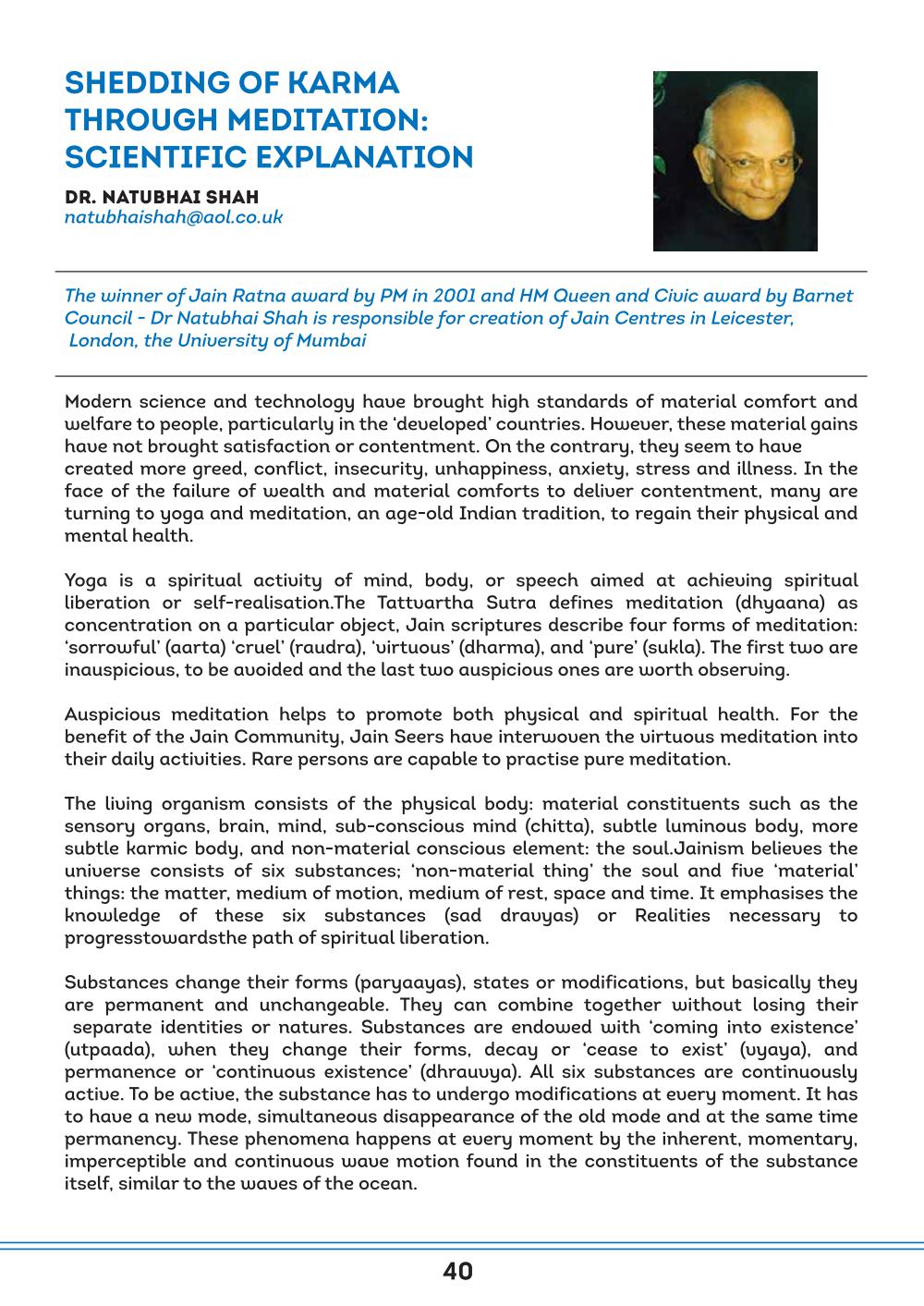________________
SHEDDING OF KARMA THROUGH MEDITATION: SCIENTIFIC EXPLANATION
DR. NATUBHAI SHAH
[email protected]
The winner of Jain Ratna award by PM in 2001 and HM Queen and Civic award by Barnet Council - Dr Natubhai Shah is responsible for creation of Jain Centres in Leicester, London, the University of Mumbai
Modern science and technology have brought high standards of material comfort and welfare to people, particularly in the 'developed' countries. However, these material gains have not brought satisfaction or contentment. On the contrary, they seem to have created more greed, conflict, insecurity, unhappiness, anxiety, stress and illness. In the face of the failure of wealth and material comforts to deliver contentment, many are turning to yoga and meditation, an age-old Indian tradition, to regain their physical and mental health.
Yoga is a spiritual activity of mind, body, or speech aimed at achieving spiritual liberation or self-realisation.The Tattuartha Sutra defines meditation (dhyaana) as concentration on a particular object, Jain scriptures describe four forms of meditation: 'sorrowful' (aarta) 'cruel' (raudra). 'virtuous' (dharma), and 'pure' (sukla). The first two are inauspicious, to be avoided and the last two auspicious ones are worth observing.
Auspicious meditation helps to promote both physical and spiritual health. For the benefit of the Jain Community, Jain Seers have interwoven the virtuous meditation into their daily activities. Rare persons are capable to practise pure meditation.
The living organism consists of the physical body: material constituents such as the sensory organs, brain, mind, sub-conscious mind (chitta), subtle luminous body, more subtle karmic body, and non-material conscious element: the soul.Jainism believes the universe consists of six substances; 'non-material thing' the soul and fiue 'material' things: the matter, medium of motion, medium of rest, space and time. It emphasises the knowledge of these six substances (sad dravyas) or Realities necessary to progresstowardsthe path of spiritual liberation.
Substances change their forms (paryaayas), states or modifications, but basically they are permanent and unchangeable. They can combine together without losing their separate identities or natures. Substances are endowed with 'coming into existence' (utpaada), when they change their forms, decay or 'cease to exist' (uyaya), and permanence or 'continuous existence" (dhrauuya). All six substances are continuously active. To be active, the substance has to undergo modifications at every moment. It has to have a new mode, simultaneous disappearance of the old mode and at the same time permanency. These phenomena happens at every moment by the inherent, momentary. imperceptible and continuous wave motion found in the constituents of the substance itself, similar to the waves of the ocean.
40
